Finding out you have high ALT levels on a blood test can be concerning, but understanding what this means is the first step toward addressing it. When ALT levels are elevated, it typically indicates that liver cells are damaged and releasing this enzyme into the bloodstream, which can happen due to various conditions ranging from fatty liver disease to medication side effects.
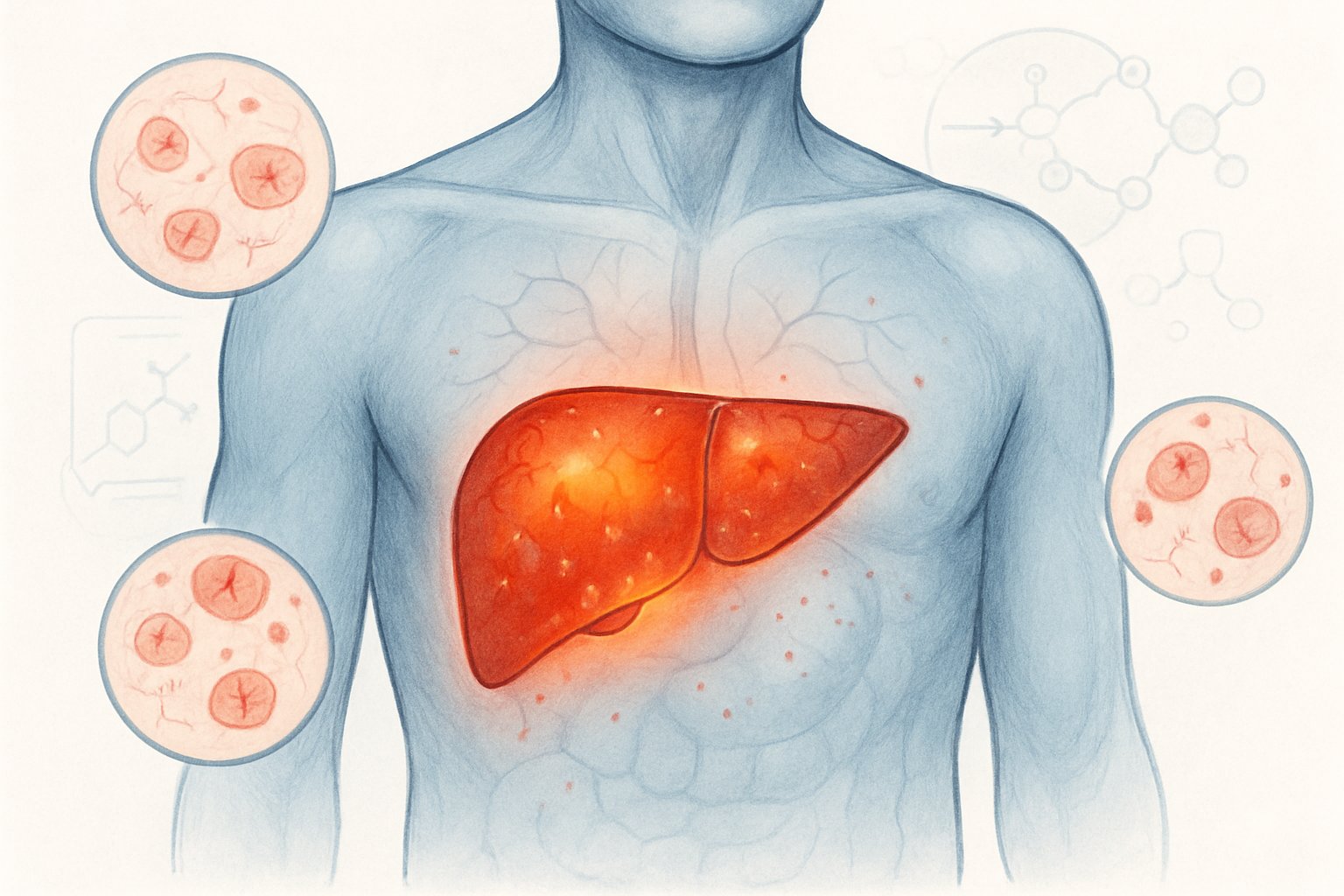
High ALT levels can occur for many reasons[1], and the good news is that many cases are temporary and treatable. The severity depends on how high the levels are and what’s causing the elevation. While mild increases might not cause noticeable symptoms, significantly elevated levels require immediate attention to prevent serious liver damage.
Understanding the causes, symptoms, and treatment options for high ALT can help people take control of their liver health. From lifestyle changes like diet and exercise to identifying problematic medications, there are often effective ways to bring ALT levels back to normal ranges and protect long-term liver function.
Key Takeaways
- High ALT levels indicate liver cell damage and can be caused by conditions like fatty liver disease, alcohol use, medications, or obesity
- ALT levels above 100 IU/L indicate serious liver disease[2] and require immediate medical attention
- Most cases of elevated ALT can be improved through lifestyle changes, weight management, and treating underlying conditions
What Is ALT and Why Does It Matter?
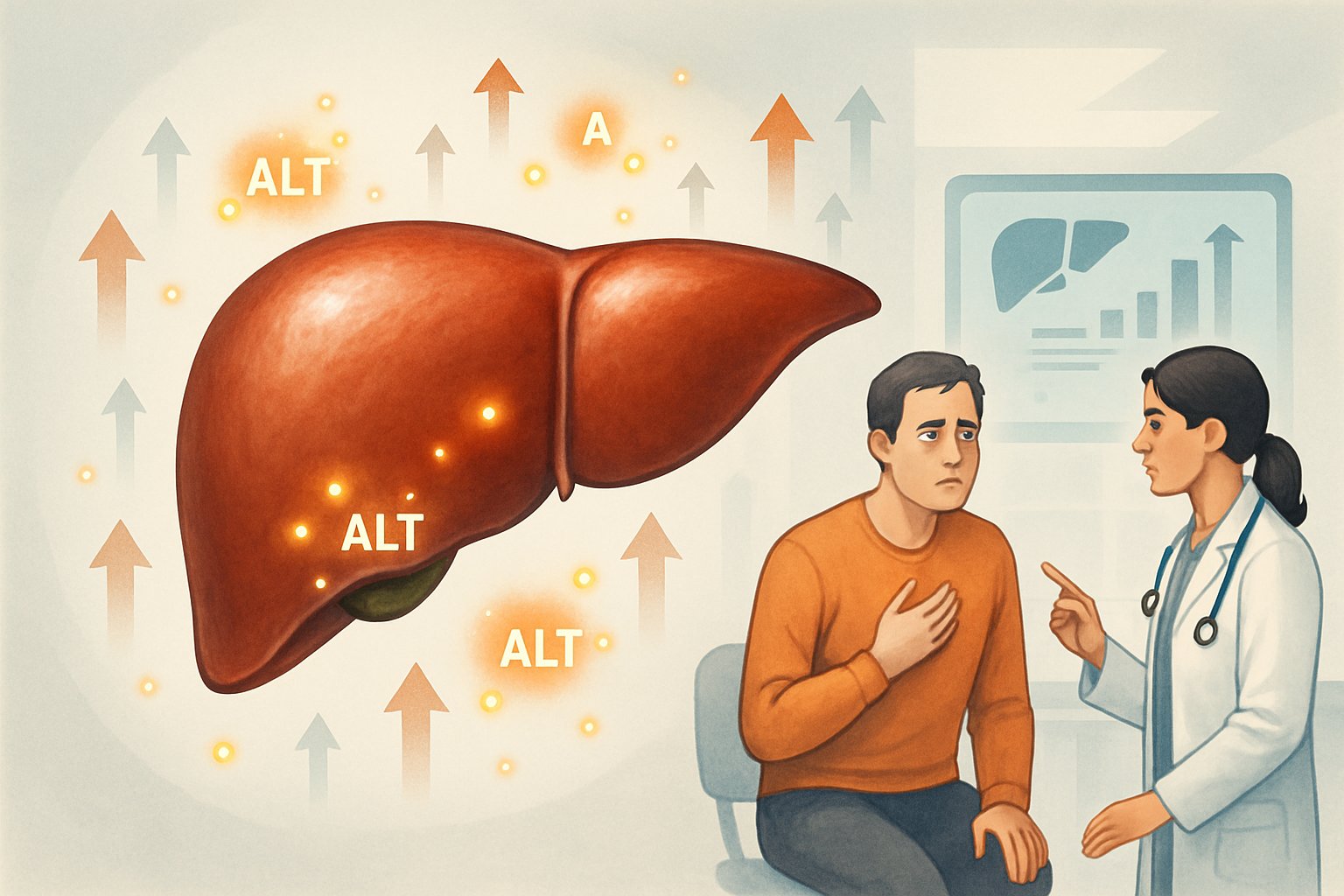
ALT is a key enzyme that helps doctors check liver health through blood tests. Understanding normal levels and how this enzyme works helps people make sense of their test results.
Definition and Function of Alanine Transaminase
Alanine transaminase (ALT) is an enzyme that mainly exists in your liver[3]. This protein speeds up chemical reactions that help break down food into energy.
ALT was formerly called serum glutamic pyruvic transaminase (SGPT). The enzyme plays a vital role in protein metabolism and amino acid processing.
ALT is found mainly in the liver, but also in smaller amounts in the kidneys, heart, muscles, and pancreas[4]. The liver contains the highest concentration of this enzyme.
When liver cells work normally, they keep most ALT inside. Only small amounts leak into the bloodstream under normal conditions.
How ALT Is Related to Liver Health
Usually, you will have low levels of ALT in your blood. But when liver cells are damaged, they release ALT into the bloodstream[5]. This makes ALT a reliable marker for liver problems.
Healthcare providers use ALT tests to detect liver damage before symptoms appear. The enzyme acts like an early warning system for liver health.
High levels of ALT in your blood may indicate that you have damage to your liver and/or a liver condition[3]. Common causes include hepatitis, fatty liver disease, and medication side effects.
Even small amounts of liver cell damage can cause ALT levels to rise. This sensitivity makes the test very useful for monitoring liver function.
Normal ALT Levels and Reference Ranges
The normal range for alanine transaminase (ALT) varies from laboratory to laboratory. One common reference range for an ALT blood test is 7 to 56 U/L (units per liter)[3].
Typical ALT Reference Ranges:
- General range: 7-56 U/L
- Men: Often slightly higher than women
- Women: Usually lower values
ALT levels are typically higher in males[3]. This difference relates to hormonal factors and muscle mass.
Different labs may use slightly different ranges. Patients should check their specific lab’s reference values on their test reports.
Age can also affect normal ranges. Older adults often have lower ALT levels compared to younger people.
Understanding High ALT Levels
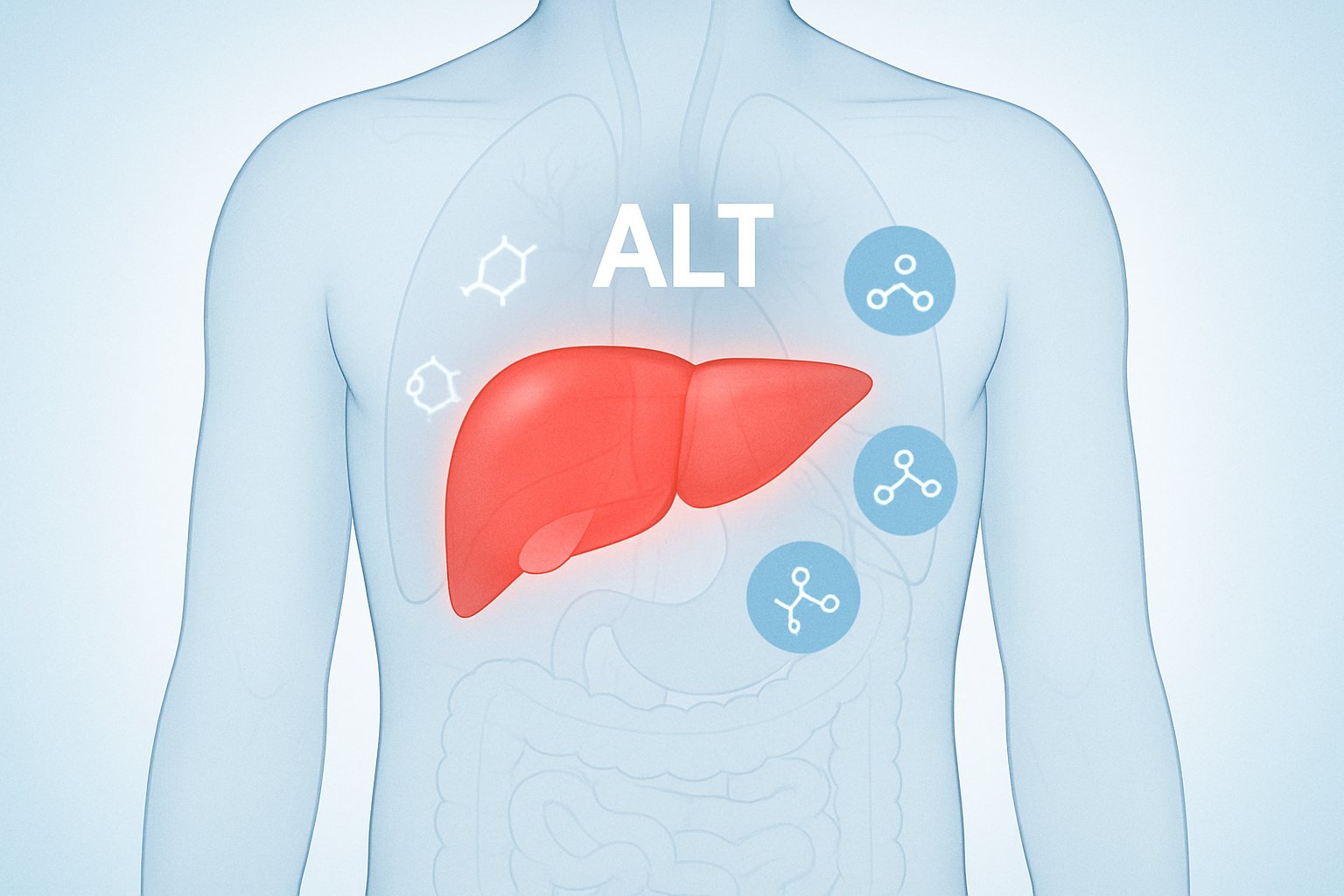
ALT is a key enzyme that reveals important information about liver health when measured through blood tests. High ALT levels[2] typically signal liver cell damage, while understanding how it compares to other liver enzymes helps doctors diagnose specific conditions.
What Does Elevated ALT Indicate?
Elevated ALT levels show that liver cells are damaged or dying. When liver cells break down, they release ALT into the bloodstream.
Normal ALT levels stay below 50 IU/L in most labs. The American Association for the Study of Liver Diseases sets stricter limits at 35 IU/L for men and 25 IU/L for women.
ALT Level Categories:
- Mild elevation: 50-100 IU/L
- Moderate elevation: 100-300 IU/L
- Severe elevation: Above 300 IU/L
Mild increases often come from alcohol use, obesity, or medications. High ALT levels above 100 IU/L[2] signal serious liver disease that needs medical attention.
The enzyme also exists in small amounts in muscles and kidneys. Muscle damage can raise ALT levels slightly, but liver problems cause the biggest increases.
How ALT Is Measured in Blood Tests
Doctors measure ALT through a simple blood draw, usually from a vein in the arm. No special preparation is needed before the test.
ALT testing happens as part of a liver function panel or comprehensive metabolic panel. The liver function test includes multiple enzymes that work together to show liver health.
Results typically come back within 1-2 days. Labs measure ALT in international units per liter (IU/L).
Common Test Panels Including ALT:
- Basic metabolic panel
- Comprehensive metabolic panel
- Liver function panel
- Hepatic function panel
Doctors often repeat ALT tests to track changes over time. Rising levels suggest ongoing liver damage, while falling levels indicate healing.
ALT Versus AST and Other Liver Enzymes
ALT and AST are the two main liver enzymes doctors check together. Both enzymes leak from damaged liver cells into the blood.
AST exists in the liver, heart, muscles, and brain. ALT stays mainly in the liver and kidneys. This makes ALT more specific for liver problems.
Key Differences:
- ALT: More liver-specific, stays elevated longer
- AST: Found in multiple organs, drops faster after injury
The AST-to-ALT ratio helps doctors identify specific liver conditions. A ratio above 2:1 often suggests alcohol-related liver damage.
Other liver enzymes include alkaline phosphatase and gamma-glutamyl transferase (GGT). These enzymes help doctors find the exact location and type of liver problem.
Doctors look at all liver enzymes together rather than just one. The pattern of which enzymes are high gives clues about what is causing the liver damage.
Common Causes of Elevated ALT
Several medical conditions and lifestyle factors can cause ALT levels to rise above normal ranges. The most common triggers include liver diseases, metabolic disorders like fatty liver disease, substance exposure from alcohol or medications, and various non-liver medical conditions.
Liver Diseases and Liver Inflammation
Viral hepatitis represents one of the most significant causes of elevated ALT levels. Hepatitis A, hepatitis B, and hepatitis C can cause dramatic increases in ALT, sometimes reaching levels 10-20 times higher than normal.
Autoimmune hepatitis occurs when the immune system attacks liver cells. This condition creates ongoing inflammation that steadily raises ALT levels over time.
Fatty liver disease encompasses both alcoholic and nonalcoholic forms. Nonalcoholic fatty liver disease affects millions[2] and often develops alongside diabetes and obesity.
Genetic liver conditions also elevate ALT levels:
- Wilson’s disease causes copper buildup in liver tissue
- Hemochromatosis leads to iron accumulation and liver damage
- Alpha-1 antitrypsin deficiency affects liver and lung function
Chronic liver disease from any cause maintains persistently high ALT levels. Early detection through ALT testing helps prevent progression to cirrhosis.
Metabolic Factors: NAFLD, Obesity, and Insulin Resistance
Nonalcoholic fatty liver disease (NAFLD) has become the leading cause of elevated ALT in developed countries. This condition affects up to 25% of adults worldwide.
Obesity creates multiple pathways for liver damage[2]. Excess weight, particularly abdominal fat, increases inflammation throughout the body including the liver.
Insulin resistance often accompanies NAFLD and obesity. When cells cannot properly use insulin, the liver works harder to process glucose and fats.
Key metabolic risk factors include:
- Body mass index over 30
- Waist circumference over 40 inches (men) or 35 inches (women)
- Type 2 diabetes
- High triglyceride levels
Diet quality significantly impacts ALT levels. High-sugar and high-fat diets promote fatty liver development, while Mediterranean-style eating patterns help reduce liver inflammation.
Substance-Related Causes: Alcohol, Medications, and Toxins
Alcohol consumption ranks among the top causes of elevated ALT. Even moderate drinking can raise ALT levels in sensitive individuals. Alcoholism creates long-term liver damage[2] through inflammation and cell death.
Common medications that elevate ALT include:
| Medication Type | Examples | Risk Level |
|---|---|---|
| Pain relievers | Acetaminophen, NSAIDs | High with overuse |
| Cholesterol drugs | Statins | Moderate |
| Antibiotics | Fluoroquinolones, cephalosporins | Variable |
| Supplements | High-dose vitamin A, herbal products | Depends on dosage |
Acetaminophen toxicity represents a medical emergency. Taking more than 4,000mg daily or combining with alcohol dramatically increases liver damage risk.
Environmental toxins from workplace exposure or contaminated substances can also raise ALT levels. Industrial chemicals and certain cleaning products pose particular risks.
Other Medical Conditions and Non-Liver Causes
Heart failure elevates ALT through blood backup in liver vessels. When the heart cannot pump effectively, blood pools in the liver and causes cell damage.
Thyroid disorders affect liver function in multiple ways. Both overactive and underactive thyroid conditions can raise ALT levels through metabolic disruption.
Celiac disease triggers intestinal inflammation that can extend to liver tissue. Many people with celiac disease show elevated ALT that normalizes on gluten-free diets.
Muscle injury releases small amounts of ALT into the bloodstream. Intense exercise, trauma, or muscle diseases can temporarily raise ALT levels.
Other contributing conditions:
- Kidney disease
- Inflammatory bowel disease
- Sleep apnea
- Polycystic ovary syndrome
Age and gender influence normal ALT ranges. Men typically have higher baseline levels than women, while older adults may show different patterns than younger individuals.
Symptoms and Warning Signs of High ALT
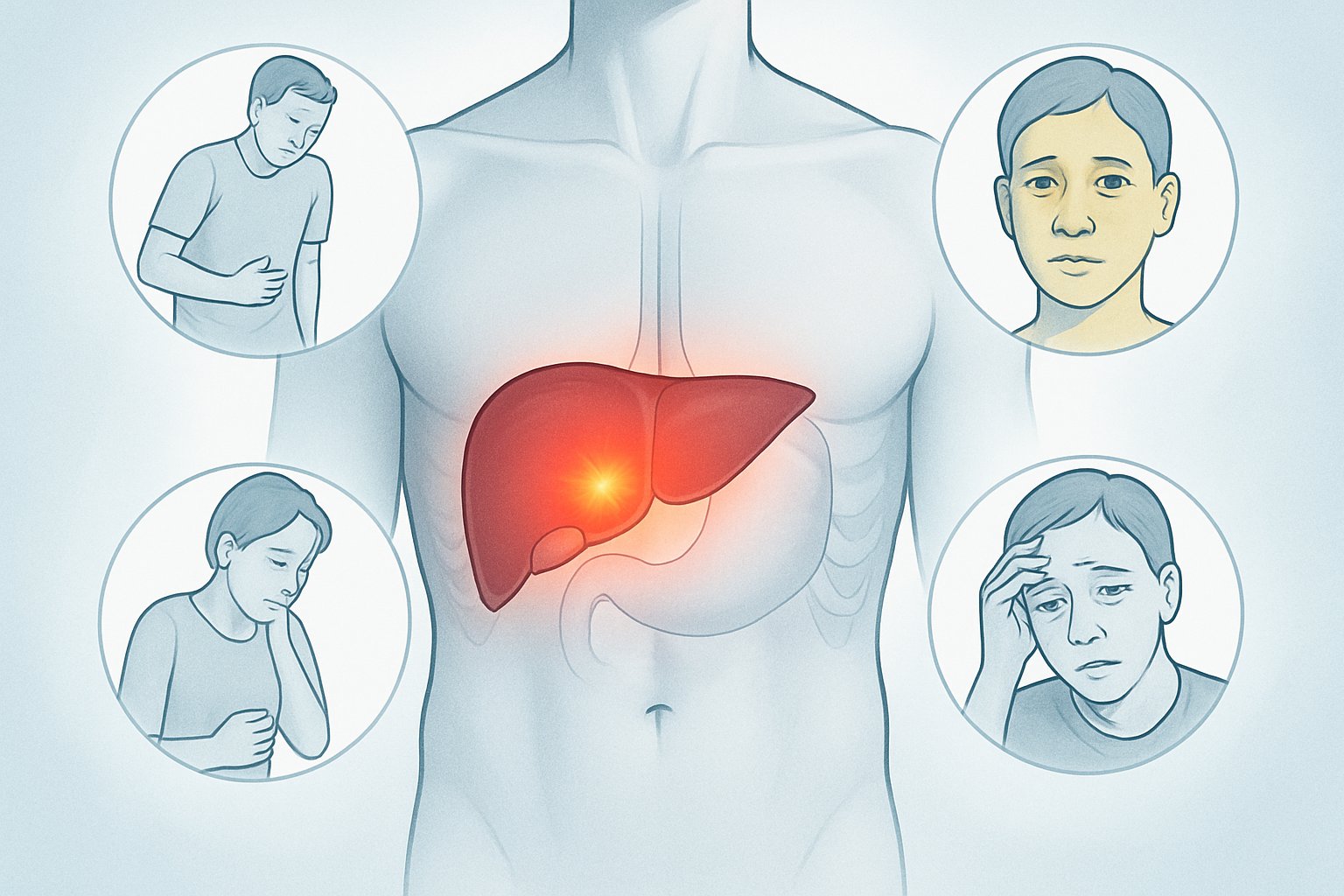
High ALT levels often cause no symptoms in early stages, but serious liver damage can lead to jaundice, abdominal pain, and dark urine. The severity and timing of symptoms help doctors determine if immediate treatment is needed.
Signs of Liver Damage
Many people with mildly elevated ALT levels feel completely normal. Symptoms typically appear when liver damage becomes more serious[2].
Physical symptoms include:
- Abdominal pain – especially in the right upper area where the liver sits
- Jaundice – yellowing of the skin and whites of the eyes
- Dark urine – becomes brown or tea-colored
- Light-colored stools – appear pale or clay-colored
- Severe itching – affects the whole body
General symptoms include:
- Nausea and vomiting – often worse in the morning
- Loss of appetite – food may taste different or unappealing
- Weight loss – happens without trying to lose weight
- Extreme tiredness – fatigue that rest does not improve
These symptoms suggest the liver is struggling to work properly. The more symptoms present, the more serious the liver damage may be.
Acute Versus Chronic Symptoms
Acute symptoms develop quickly over days or weeks. They often signal sudden liver injury from infections, drug reactions, or toxins.
Acute cases may cause:
- Severe nausea and vomiting
- Sudden onset of jaundice
- Sharp abdominal pain
- Rapid weight loss
Chronic symptoms develop slowly over months or years. They suggest ongoing liver damage from conditions like fatty liver disease or long-term alcohol use.
Chronic cases typically show:
- Gradual weight loss
- Slowly worsening fatigue
- Mild but persistent abdominal discomfort
- Gradual development of jaundice
Acute symptoms need immediate medical attention. Chronic symptoms allow more time for evaluation but still require proper diagnosis and treatment.
When to Seek Urgent Medical Attention
Call 911 or go to the emergency room immediately if experiencing:
- Severe jaundice with yellowing of skin and eyes
- Intense abdominal pain that does not improve
- Persistent vomiting that prevents keeping fluids down
- Mental confusion or difficulty thinking clearly
- Signs of liver failure like fluid buildup in the abdomen
See a doctor within 24 hours for:
- New onset of jaundice
- Dark urine lasting more than two days
- Unexplained weight loss of more than 10 pounds
- Severe itching all over the body
- Loss of appetite lasting more than a week
These warning signs may indicate serious conditions like liver cirrhosis or liver cancer. Early medical care can prevent permanent liver damage and improve treatment outcomes.
People taking medications known to affect the liver should watch for these symptoms carefully. Regular blood tests help catch problems before symptoms develop.
How High Is Too High? ALT Level Severity
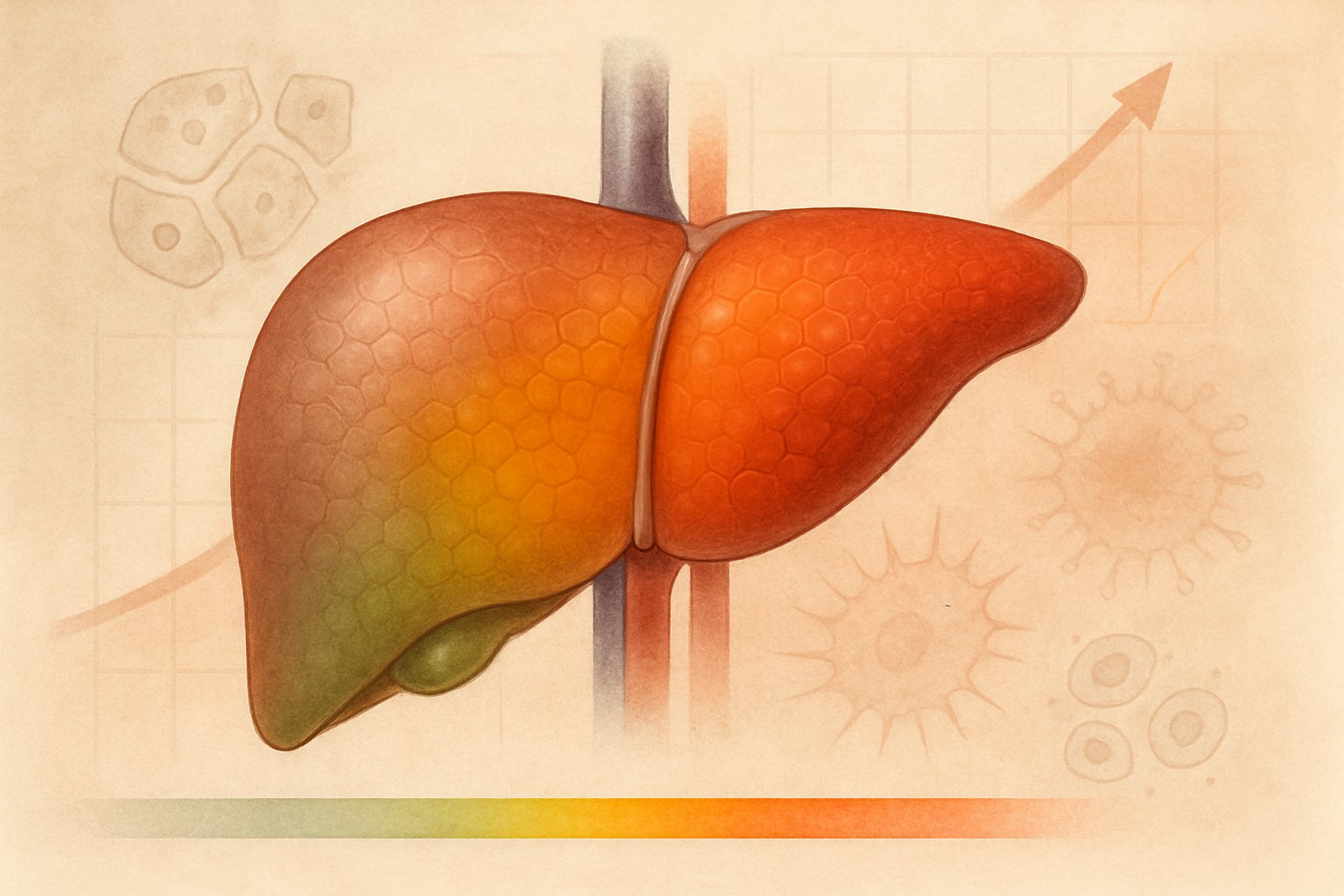
ALT levels are measured in international units per liter (IU/L), with different ranges indicating mild, moderate, or severe liver damage. Normal ranges vary between laboratories and depend on factors like age and gender, while specific patterns help doctors determine the underlying cause.
Mild, Moderate, and Severe ALT Elevations
Normal ALT levels typically fall below 50 IU/L in most laboratories. However, the upper limit of normal is 35 IU/L for men and 25 IU/L for women[2] according to liver disease specialists.
Mild elevation occurs when ALT reaches 50-100 IU/L. This level often results from alcohol use, obesity, or certain medications. Lifestyle changes like diet and exercise can usually reverse mild elevations.
Moderate elevation ranges from 100-300 IU/L. This indicates more significant liver damage that requires medical attention and treatment of underlying conditions.
Severe elevation exceeds 300 IU/L and suggests serious liver disease. ALT levels above 1000 IU/L often occur with acute hepatitis or drug-induced liver injury. These cases need immediate medical care.
Cancer patients undergoing treatment may have acceptable ALT levels 3-5 times higher than normal limits during therapy.
ALT Reference Ranges by Age, Gender, and Laboratory
ALT reference ranges differ between testing facilities, making it important to use the specific laboratory’s normal values. Most labs consider levels under 40-50 IU/L as normal.
Gender differences are significant in ALT interpretation. Women typically have lower normal ALT levels than men due to differences in muscle mass and metabolism.
Age factors also affect normal ranges. Older adults may have slightly different reference values compared to younger individuals.
Different laboratories use various testing methods and equipment. This creates small variations in normal ranges between facilities. Doctors always compare results to the specific lab’s reference values.
Some labs now use lower cutoff points to detect liver problems earlier. These updated ranges help identify fatty liver disease and other conditions before they progress.
ALT Patterns and Related Blood Tests
ALT rarely gets tested alone. A liver function panel includes multiple enzymes and proteins that work together to assess liver health.
AST comparison helps determine liver damage location. When ALT is higher than AST, it usually indicates liver cell damage. When AST exceeds ALT significantly, it may suggest alcohol-related liver disease or muscle damage.
Bilirubin levels show how well the liver processes waste. High bilirubin with elevated ALT indicates more severe liver dysfunction and possible bile flow problems.
GGT (gamma-glutamyl transferase) elevation alongside high ALT often points to alcohol use or bile duct issues. This combination helps doctors narrow down potential causes.
Imaging studies like ultrasound provide visual information about liver structure. FibroScan or transient elastography measures liver stiffness to detect scarring without invasive procedures.
A liver biopsy may be necessary when ALT remains high despite treatment, or when doctors need to determine the exact type and extent of liver damage.
Diagnosis and Evaluation After a High ALT Result
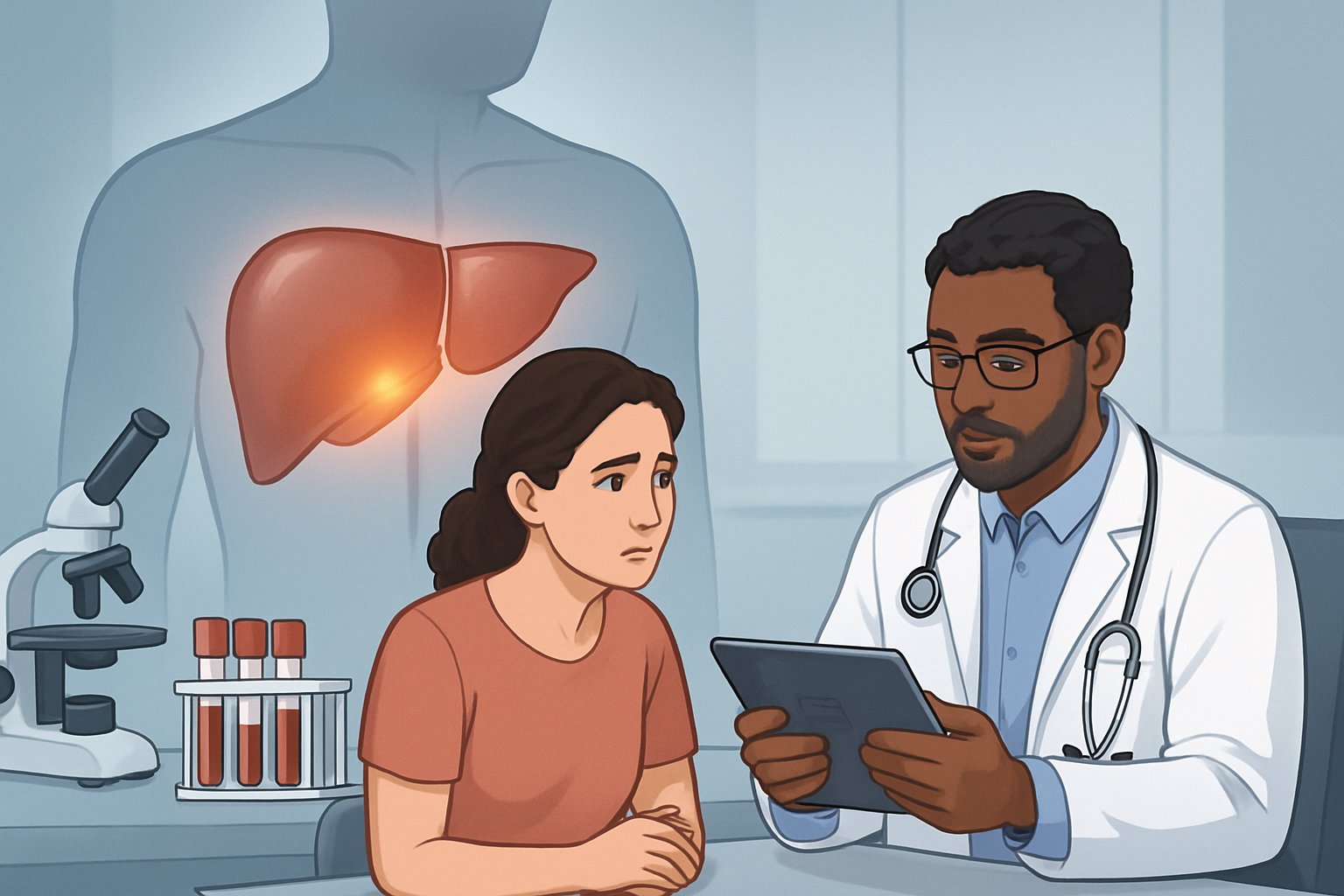
Finding the cause of elevated ALT requires a systematic approach that includes medical history review, physical examination, additional blood work, and imaging studies. Doctors use specific patterns of test results to narrow down potential liver conditions and determine the best treatment plan.
Initial Assessment and History Taking
The diagnostic process begins with a detailed medical history and physical exam. Doctors ask about alcohol use, medications, herbal supplements, and family history of liver disease.
They also check for risk factors for viral hepatitis[6] and metabolic conditions. Recent travel, drug use, and blood transfusions help identify potential causes.
During the physical exam, doctors look for signs of chronic liver disease. These include jaundice, swollen abdomen, palm redness, and visible blood vessels on the skin.
Key symptoms doctors evaluate:
- Fatigue and weakness
- Abdominal pain
- Nausea and loss of appetite
- Dark urine or pale stools
- Unexplained weight loss
The timing of symptoms matters too. Sudden onset may suggest acute hepatitis, while gradual symptoms often point to chronic conditions.
Additional Blood Tests and Imaging
Beyond the initial liver function test, doctors order specific blood work to identify the cause. A complete blood count checks for infection or other blood disorders.
A viral hepatitis panel[6] tests for hepatitis A, B, and C. Iron studies help detect hemochromatosis, a condition where the body stores too much iron.
Common follow-up tests include:
- Prothrombin time (PT/INR)
- Albumin levels
- Total and direct bilirubin
- Alkaline phosphatase
- Autoimmune markers
An ultrasound of the abdomen[6] is usually the first imaging test ordered. It shows the liver’s size, shape, and any visible abnormalities.
More advanced imaging like CT or MRI may be needed if the ultrasound shows problems. These tests provide clearer pictures of liver damage or blockages.
Identifying Underlying Causes
The pattern of elevated liver enzymes helps doctors identify specific conditions. High ALT with normal alkaline phosphatase[6] usually means liver cell damage.
Doctors use the R-value to classify liver injury patterns. This compares ALT levels to alkaline phosphatase levels to determine the type of liver problem.
Common causes by pattern:
- Liver cell damage: Viral hepatitis, alcohol-related disease, fatty liver
- Bile duct problems: Gallstones, tumors, primary biliary cirrhosis
- Mixed patterns: Drug-induced liver injury, advanced liver disease
In some cases, a liver biopsy[6] may be needed to confirm the diagnosis. This involves taking a small tissue sample from the liver for microscopic examination.
The biopsy helps determine the extent of liver damage and guides treatment decisions. It’s typically reserved for unclear cases or when autoimmune liver disease is suspected.
Managing and Lowering High ALT Levels
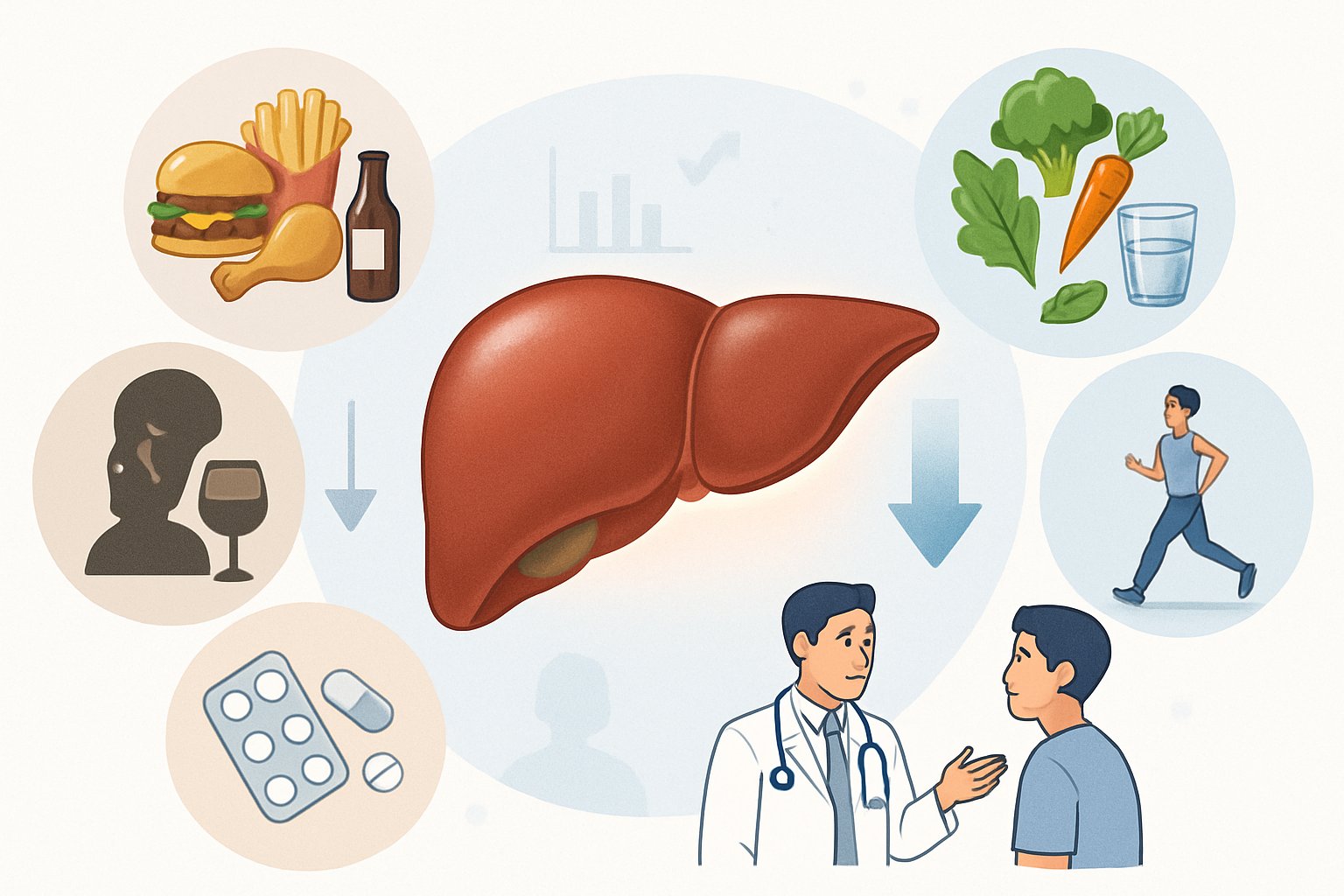
Reducing elevated ALT levels typically involves lifestyle modifications and weight management[2], dietary changes, and careful medication review. Most cases can return to normal ranges with proper treatment and consistent monitoring.
Lifestyle Modifications and Weight Loss
Weight loss plays a key role in reducing ALT levels, especially for people with fatty liver disease. Losing excess weight improves insulin sensitivity and reduces inflammation[2] in liver cells.
Obesity directly contributes to elevated ALT levels. People who carry extra weight around their midsection face higher risks of liver damage.
Exercise Benefits:
- Improves liver function
- Reduces fatty deposits in liver tissue
- Lowers inflammation markers
- Helps maintain healthy weight
Regular exercise is a key factor in treating liver diseases[2]. Daily physical activity helps the liver process fats more efficiently.
Weight reduction also lowers the risk of liver cancer. Combining exercise with reduced calorie intake produces the best results for liver health.
Dietary Recommendations
Diet changes can significantly impact ALT levels and overall liver function. Drinking coffee may help lower ALT levels[2] due to its protective properties.
Coffee consumption of 1 to 4 cups daily shows benefits for liver health. The caffeine and antioxidants in coffee may protect liver cells from damage.
Liver-Friendly Foods:
- High-fiber vegetables – reduce liver fat buildup
- Lean proteins – support liver repair
- Folate-rich foods – prevent liver damage
Increasing folic acid consumption helps improve liver health[2]. Folate deficiency can cause liver damage and increase cancer risk.
Foods High in Folate:
- Beef liver
- Spinach
- Black-eyed peas
- Fortified cereals
- Asparagus
People should limit saturated fats and processed foods. Alcohol consumption must be reduced or eliminated completely.
Medication Review and Adjustments
Many medications can raise ALT levels by damaging liver cells. Over-the-counter and prescription drugs are common causes of high ALT results[2].
Common Problem Medications:
- Acetaminophen (Tylenol) – when overused
- NSAIDs – aspirin, ibuprofen
- Statins – cholesterol medications
- Antibiotics – certain types
- Vitamin A supplements – in high doses
Patients should discuss all medications with their doctor. Some drugs may need dose adjustments or alternatives.
Supplement use requires careful review. Many herbal products and vitamins can affect liver function without obvious symptoms.
Iron overload from supplements can damage the liver. People should only take iron when medically necessary.
Long-Term Monitoring and Liver Health
Regular blood tests help track ALT levels over time. Most people need follow-up testing every 3 to 6 months initially.
ALT levels between 35-50 IU/L may need monitoring. Levels above 100 IU/L require immediate medical attention and treatment.
Monitoring Schedule:
- Mild elevation – test every 3-6 months
- Moderate elevation – test monthly
- Severe elevation – test weekly or bi-weekly
Blood fat levels need regular checking. High cholesterol and triglycerides can worsen liver problems.
Early treatment prevents permanent liver damage. High ALT can progress to cirrhosis if left untreated[2], which cannot be reversed.
People with ongoing liver conditions need lifelong monitoring. Even with treatment, some genetic conditions require ongoing management rather than complete cure.
Frequently Asked Questions
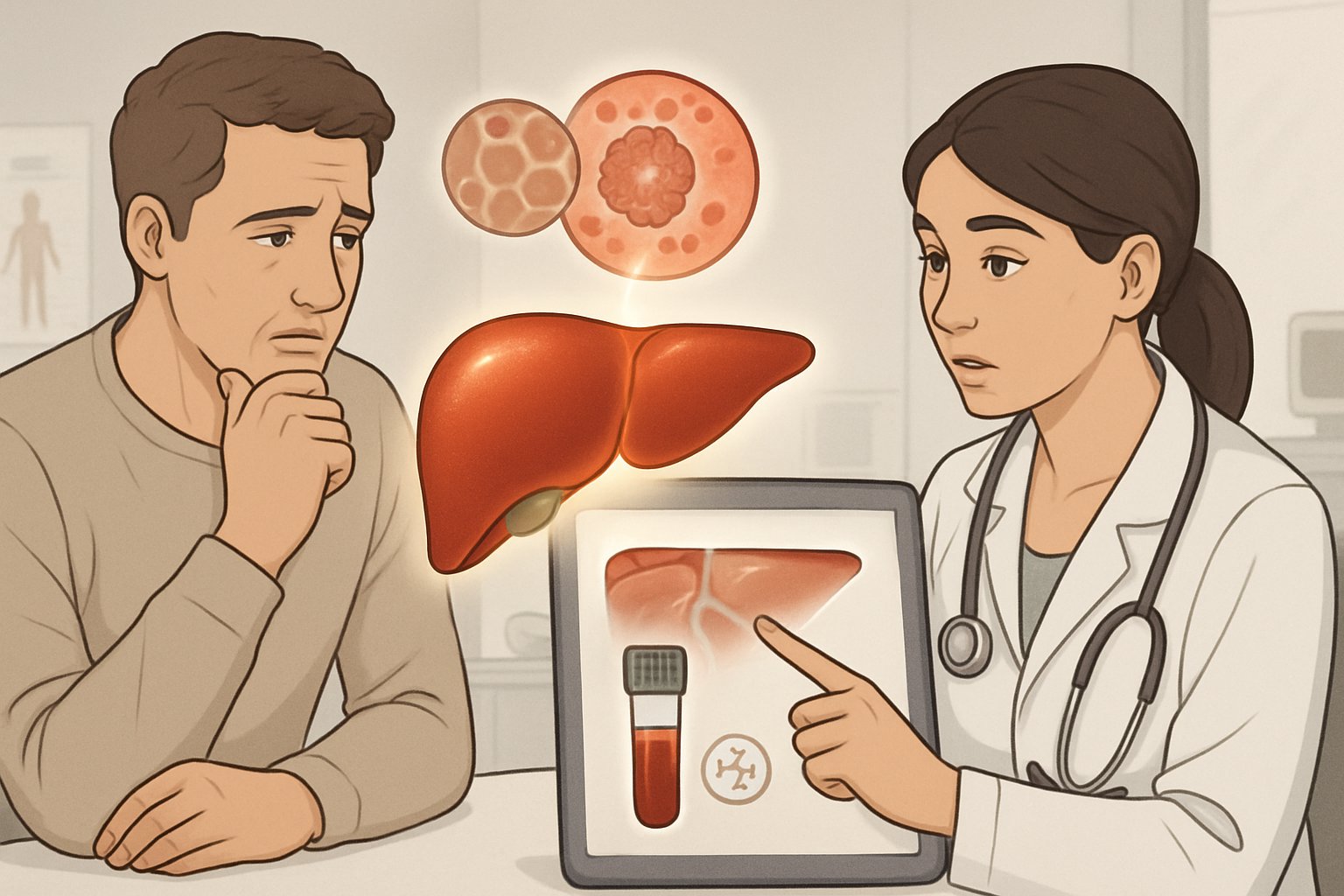
High ALT levels can cause specific symptoms like abdominal pain and jaundice, though mild elevations may show no signs. Medical attention becomes necessary when levels exceed 100 IU/L, and various lifestyle changes can help reduce elevated readings.
What are the symptoms associated with elevated ALT levels?
Mild elevation in ALT levels may not cause symptoms[2], but higher levels often produce noticeable signs. When liver damage causes increased ALT, patients typically experience abdominal pain in the right upper area.
Dark-colored urine and light-colored stools are common indicators. Many people also notice yellowing of their skin or eyes, known as jaundice.
Other symptoms include persistent fatigue and exhaustion. Loss of appetite, weight loss, nausea, and vomiting frequently occur with elevated ALT levels.
Skin itching can develop as ALT levels rise. These symptoms usually become more pronounced as liver damage progresses.
At what point should one be concerned about raised ALT levels?
Normal ALT levels are usually less than 50 IU/L[2], though ranges vary between laboratories. The American Association for the Study of Liver Diseases sets upper limits at 35 IU/L for men and 25 IU/L for women.
ALT levels up to 100 IU/L are considered mild elevation[2]. These levels may result from alcohol use, obesity, or certain medications.
ALT levels above 100 IU/L clearly indicate serious liver disease[2]. Immediate medical attention and appropriate treatment become necessary at this point.
Some medications can temporarily raise ALT levels during treatment. Doctors monitor these increases and levels typically return to normal after treatment ends.
How do normal ALT levels vary with age?
Normal ALT ranges remain relatively consistent across adult age groups. Most laboratories use the same reference ranges for adults regardless of age.
Men typically have slightly higher normal ALT levels than women[2]. This difference reflects natural variations in liver enzyme activity between genders.
Older adults may experience slight increases in ALT due to accumulated liver changes over time. However, significantly elevated levels still indicate liver problems at any age.
Children and adolescents may have different reference ranges. Healthcare providers use age-specific guidelines when interpreting pediatric ALT results.
What are the potential causes of an ALT level over 100?
Viral hepatitis usually results in extremely high ALT levels[2] well above 100 IU/L. Hepatitis A, B, and C infections commonly cause these dramatic elevations.
Autoimmune hepatitis can produce severely elevated ALT readings. This condition occurs when the immune system attacks liver cells directly.
Reduced blood flow to the liver[2] can cause significant ALT increases. Heart failure or shock may restrict liver circulation.
Liver cancer[2] often elevates ALT above 100 IU/L. Both primary liver cancer and cancer that spreads to the liver[7] can cause these increases.
Drug-induced liver damage frequently produces high ALT levels. Acetaminophen overdose is a common cause of severe liver injury.
Acute fatty liver disease can rapidly elevate ALT readings. This condition may develop during pregnancy or with certain medications.
What lifestyle changes can help reduce high ALT levels?
Regular exercise might help improve liver health[2]. Physical activity plays a significant role in treating liver diseases and reducing ALT levels.
Weight loss is important for treating fatty liver disease[2]. Losing excess weight improves insulin sensitivity and reduces liver inflammation.
Drinking coffee can help lower ALT levels[2]. The caffeine content may have liver-protecting properties and antioxidant effects.
Avoiding or reducing alcohol consumption helps protect liver cells. Alcohol breakdown damages the liver and increases inflammatory markers.
Increasing folic acid consumption[2] supports liver health. Foods high in folate include beef liver, spinach, black-eyed peas, and fortified cereals.
Avoiding overuse of acetaminophen prevents liver damage. Many over-the-counter medications contain this ingredient and can harm the liver in high doses.
What medical interventions are available if ALT levels are significantly elevated?
Doctors first identify and treat the underlying cause of elevated ALT. Treatment approaches vary depending on whether the cause is viral, autoimmune, or drug-related.
Antiviral medications can treat hepatitis B and C infections. These treatments often successfully reduce ALT levels to normal ranges.
Immunosuppressive drugs may help patients with autoimmune hepatitis. Corticosteroids and other medications can reduce liver inflammation.
Discontinuing harmful medications allows ALT levels to decrease. Healthcare providers may switch patients to liver-friendly alternatives when possible.
Most cases of high ALT can return to normal with appropriate treatment[2]. Early intervention prevents progression to permanent liver damage.
Regular monitoring helps track treatment progress.
References
- High ALT levels can occur for many reasons. https://www.verywellhealth.com/elevated-liver-enzymes-5443042 Accessed October 27, 2025
- High ALT Blood Test Levels: Causes, Symptoms and When to Worry. https://www.medicinenet.com/what_does_it_mean_when_you_have_high_alt/article.htm Accessed October 27, 2025
- Alanine Transaminase (ALT) Blood Test: What It Is, Procedure & Results. https://my.clevelandclinic.org/health/diagnostics/22028-alanine-transaminase-alt Accessed October 27, 2025
- Alanine Aminotransferase (ALT) Test . https://healthy.kaiserpermanente.org/health-wellness/health-encyclopedia/he.alanine-aminotransferase-alt-test.hw20645 Accessed October 27, 2025
- ALT Blood Test: MedlinePlus Medical Test. https://medlineplus.gov/lab-tests/alt-blood-test/ Accessed October 27, 2025
- How to approach elevated liver enzymes?. https://www.aasld.org/liver-fellow-network/core-series/back-basics/how-approach-elevated-liver-enzymes Accessed October 27, 2025
- Access to this page has been denied. https://www.goodrx.com/health-topic/liver/elevated-liver-enzymes Accessed October 27, 2025
